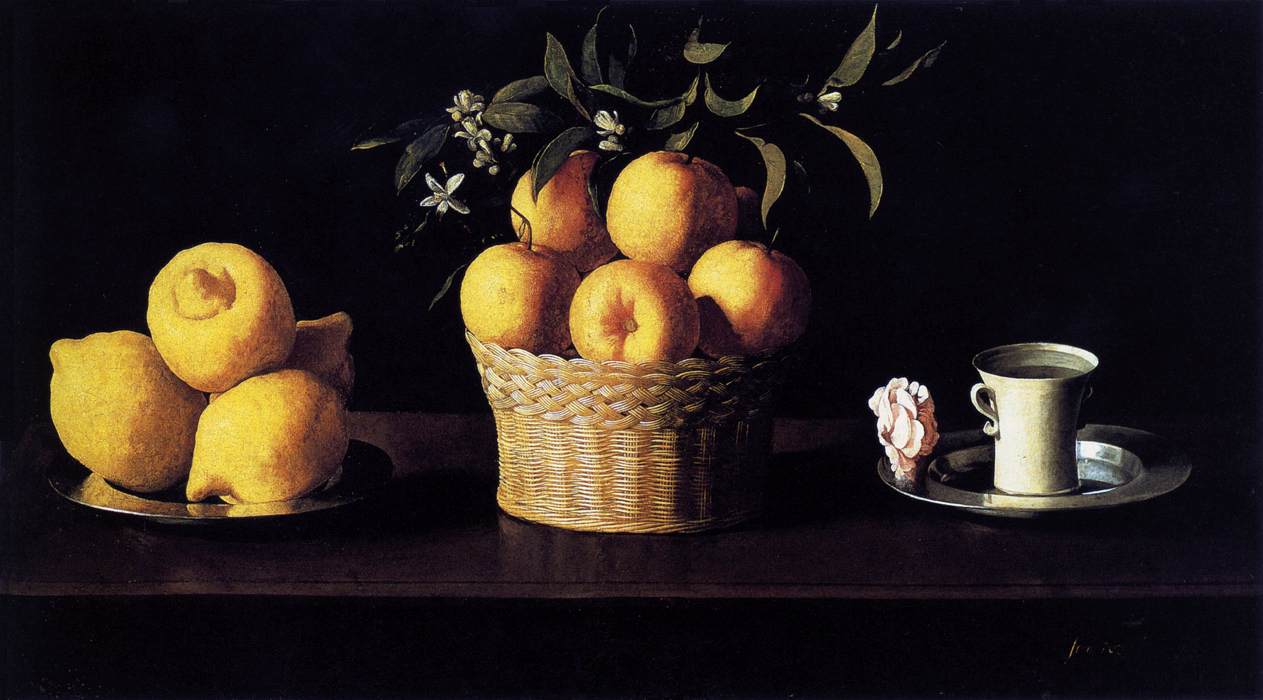|
Spanish Lesson with Grapefruit In a tiny Madrileño café my Zaragozan instructor conjugated subjunctive verbs as the crunch of my puffy croissant lathered in melting butter and layered with glistening grapefruit marmalade crumbled down to the white plate. Sticky fingers stopped me from turning the lesson page as I sipped strong coffee from a large round bowl rather than a cup. Yo coma Tu comas Ella / el / Usted coma Nosotras / Nosotros comamos Verb endings change like the direction of fractions When inverted, confusing and tumbling my thoughts back to the focus of the crunch of the croissant the ingestion of the tingling intensity of grapefruit tartness the lemony aroma, it closes my eyes. The grapefruit juices transformed into reflective, glass-like substance. Hearing the white plates clattering behind the counter as the waitress organizes her miniature station, I open my eyes to the reflections tilting off the Spanish book from the invading morning sunlight through a picture window with views of a narrow, uneven cobble-stoned street; its gray stones shine half in sun splash and half lay in the opposite building’s shadow. Vosotras / vosotros comáis Ellas / Ellos / Ustedes coman My instructor recited the chart I hear the inflections, the soft Spanish conversations at other tables, the giggles and complaints uttered in a sound and pictorial collage. Still the present perfect conjugation is to speak of unlikely or uncertain events in the past or to cast an opinion, often emotional, about an event or moment in the past. I ate or comiera is the subjunctive imperfect but I wish I were in the subjunctive present, yo coma, I eat and the grapefruit marmelada puckers the insides of my mouth. It was the essence of grapefruit and its memory persists like the madeleine Proust’s aunt Leonie tasted after dipping its crumb into the lime-flower infused tea on a Sunday morning. Kathleen Shull Kathleen Shull teaches AP Literature and Composition, AP Seminar Capstone at the largest Native American High School in the United States, Chinle High School on the Navajo Nation. Formerly a journalist, she also taught American English to Germans for 16 years in Saarbruecken, Muelheim an der Ruhr and Berlin. She is also a certified German, journalism, and history teacher. Last summer, she went to Jordan on a Fulbright-Hays cultural exchange to Amman, Petra, Madaba, Aqaba, the Wadi Rum, Jerash, Irbid and Umm Qais where she learned about the Ghazal poetry tradition in Arabic which she now teaches to her students. She studied Spanish in Guanajuato, Mexico and Madrid, Spain. When not learning languages, reading, or hiking, she spends most of her leisure time learning about art or visiting museums.
0 Comments
Your comment will be posted after it is approved.
Leave a Reply. |
The Ekphrastic Review
COOKIES/PRIVACY
This site uses cookies to deliver your best navigation experience this time and next. Continuing here means you consent to cookies. Thank you. Join us on Facebook:
July 2024
|




